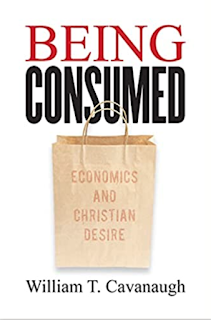Take quantum mechanics, the crown jewel of our species, the most accurate, far-ranging and beautiful of all our physical theories. It lies behind the supremacy of our smartphones, behind the Internet, behind the coming promise of godlike computing power. It has completely reshaped our world. We know how to use it, it works as if by some strange miracle, and yet there is not a human soul, alive or dead, who actually gets it. The mind cannot come to grips with its paradoxes and contradictions. It's as if the theory had fallen to earth from another planet, and we simply scamper around it like apes, toying and playing with it, but with no true understanding.In the early twentieth century, two theories emerged from the world of physics: relativity and quantum mechanics. They are, in very crude and reductive terms, descriptions of what happens to the world at scales that are very large and very small, respectively. Planets curving spacetime, electrons existing in numerous possible states at once. Both of them revolutionized the way we understand the reality in which we live, and many of the same names were involved in developing them both, but they also confronted us with the limits of our own understanding. Benjamin Labatut's When We Cease to Understand the World is a quasi-fictional novel about the geniuses that ushered in these new sciences, and were confronted by these limits.
The first section, "Prussian Blue" is almost entire non-fictional. (In fact, while reading it, I sort of marveled at the assertion on the book's jacket that it combines fact and fiction, assuming that the fiction was extremely well concealed.) This section is about cyanide, a compound that makes up both the brilliant paint color that gives the section its title, and the poisonous gas that the Nazis pumped into the chambers of the concentration camps. It's a meditation on the way that atrocity and progress often go hand in hand, and it slips effortlessly from place to place and moment to moment, finding the hidden connections between unlikely subjects: Fritz Haber, Napoleon Bonaparte, the destruction of the North American bison. "Prussian Blue" sets the tone for the book as a whole, which plays fast--but not loose--with history.
It also sets the tone for the next section, "Schwarzschild's Singularity," about the physicist who discovers the existence of black hole. When he makes his discovery, Schwarzschild is at the German Army's Russian front in World War I, suffering from a crippling autoimmune disorder called pemphigus. Illness and war are burdens that fall on nearly all of the geniuses collected in Labatut's book; Heisenberg, we'll discover, suffers from disfiguring allergies, Schrodinger from tuberculosis that leaves him confined to a sanatorium for years. Like these two, Schwarzschild comes to his discoveries nearly by pure mathematics, rather than experimentation or observation, and like them discovery comes mysteriously, almost as epiphany. And like them, Schwarzschild is haunted by the implications of his discovery. These black holes, if Schwarzschild's calculations are correct, are rapacious voids that crush whatever comes into their path, even light. They are encircled by an invisible line past which annihilation is mathematically certain, and from which not even information can escape; it cannot, in any real sense, be known. For Schwarzschild, the black hole finds its analogs in his open sores, and in visions of Europe heading for cataclysm:
If matter were prone to birthing monsters of this kind, Schwarzschild asked with a trembling voice, were there correlations with the human psyche? Could a sufficient concentration of human will--millions of people exploited for a single end with their minds compressed into the same psychic space--unleash something comparable to the singularity? Schwarzschild was convinced that such a thing was not only possible, but was actually taking place in the Fatherland. Courant tried to appease him; he said that he saw no signs of the apocalypse Schwarszchild feared, and that surely there would be nothing worse than the war they were mired in. He reminded Schwarzschild that the human soul was a greater mystery than any mathematical enigma, and that it was unwise to project the findings of physics into such far-flung realms as psychology. But Schwarzschild was inconsolable. He babbled about a black sun dawning over the horizon, capable of engulfing the entire world, and he lamented that there was nothing to do about it. Because the singularity sent forth no warnings.
The center of the book, however, is the title piece, which tells the story of the figures at the center of the dispute over quantum mechanics: de Broglie, Einstein, Heisenberg, Schrodinger. As the book progresses, its fictional elements come to the forefront; the physical and intellectual torments of Heisenberg and Schrodinger seem almost entirely invented. Though these two are rivals, they share the torments of Schwarzschild: the sickness, the fear of war, the fear of the limits that emerge from their calculations. In the sanatorium, Schwarzschild falls in love with a tuberculosis-ridden teenager who shares his passion for Buddhist scripture, and there he devises his famous wave equation to describe the nature of subatomic particles. The wave function is strange; it seems to describe another world, or a number of them, yet Schrodinger remains sure that the subatomic world can be described and predicted just as the mechanical one can.
It's Heisenberg who discovers the truth: Schrodinger's wave equation describes the electron's numerous possible states, which it occupies simultaneously, only "choosing" one of these possibilities when it is measured by human observation. (Physicists: you can let me know what's wrong with my description in the comment section below.) What's more, there is a limit to what you can simultaneously observe about it; if you collapse the wave function, determine its position, you can not know its velocity; if you determine its velocity, you cannot know its position. What Heisenberg demonstrated is that there is a fundamental limit to how much we can understand about the world--not just an experimental or mechanical limit, but a fundamental one, baked into the very fabric of the universe. Like Schwarzschild, he too is tortured by the implications of this, a science that has led not to understanding but the knowledge of what cannot be understood.
Heisenberg makes these discoveries when, in one of the book's most remarkable passages, he's forced to drink a glass of absinthe by knifepoint by a bar patron who insists that scientists like him have led the world to be impossible to understand. He wants the scientist, too, to be disoriented; ironically, it is this flight of drunkenness and hallucination--complete with a vision of the horrors of nuclear war--that leads Heisenberg to shake the possibility of a knowable world from its pedestal. The limit that Schwarzschild finds in the deepest reaches of impossible space, Heisenberg discovers at the smallest and most fundamental levels of reality as we live it.
When We Cease to Understand the World shows, better than anything I've ever read, the true size and scope of the revolution the study of physics brought to the world in the early 20th century. It draws a parallel between these momentous revelations and the wars that twice brought Europe into ruin, another place at which our understanding founders. Its methods--mixing fact and fiction without marking the boundaries between--seem of a piece with its subject, as if suggesting that where knowledge and measurement falter, only intuition and imagination can bridge the gap. It's a book that brings not just genius, but the paradox at the heart of reality, down to a human scale.













